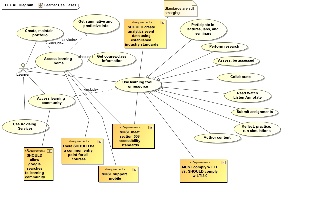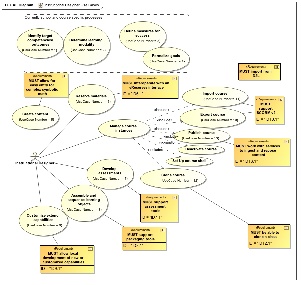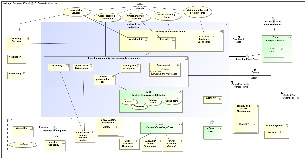Page History
We developed the diagrams here at UW-Madison and have submitted to the Unizin platform group as a starting point for their work. There are currently three diagrams; there will be more. They represent in UML many of the capabilities we developed in RATL.
Note well: this is still in early draft phase
June 2014 Reference arch in UML (draft)
The learner use case diagram is meant to be a broad inventory of the use cases worth capturing at this stage. Some of the use cases are linked by "include' lines. This means that the one use case can include the other. One of the use cases (Use learning tool or resource) is linked by "generalization" lines to the ones on the right. The generalization link is shown as a line with an open arrow-head. You would read this as Participating in lectures, labs and seminars, Performing research, Submitting assignments (etc.) are all different ways of using learning tools or resources.
Some of the use cases have requirements attached. We will probably place requirements on use cases, the capabilities, and interfaces
The instructional designer use case diagram is similar in structure to the learner diagram
This diagram represents the ecosystem as supports the learner. Primary use cases are represented with links down to the capabilities that support them (thanks Rich for the guidance on this part!). Capabilities are represented as component rectangles. The green ones are the gaps. The big purple rectangle contains all capabilities the learner can interact with in the same session. Inside that, the top yellow rectangle shows the "Teaching and Learning Home", i.e., the entry point for a specific learner to all the relevant capabilities in the ecosystem. The middle purple box labeled "Learning Community (has permeable boundaries)" is analogous to a course/session entry point. We avoided calling it course or session because we wanted to generalize the capability to include outcomes-based learning.



